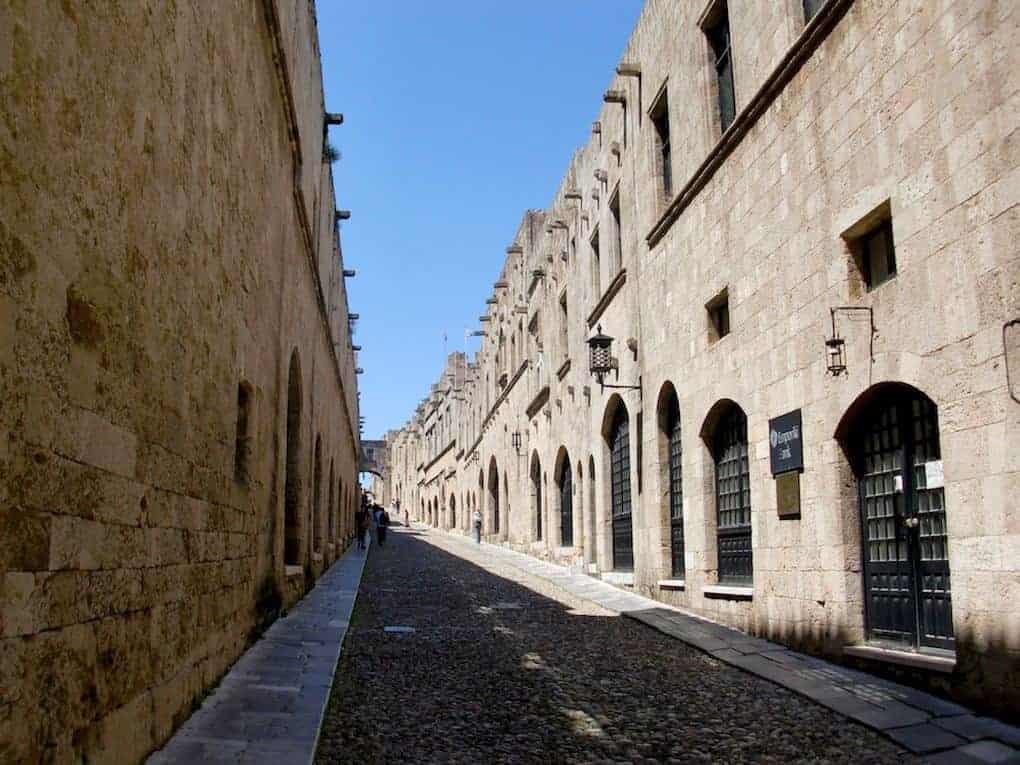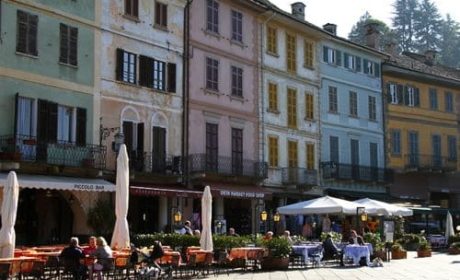Is a visit to the Greek Isles on your boomer travel list? Alan and I hope to explore the historical islands of the Aegean Sea one day. Wouldn’t sailing on a chartered boat with a couple of our boomer friends be fun? Hopefully that Greek dream will come true. When it does, we’ll be taking this historical tour of Rhodes from today’s guest post by Anil Polat, author of the blog foXnoMad:

The Greek island of Rhodes — a small 540 square mile speck on modern maps — was the key to the Aegean Sea in ancient times. Its inhabitants successfully fought off the Romans, Persians and Ottomans on occasion, and the famous Greek Island was home to one of the 7 Ancient Wonders of the World. These days, the island is regularly invaded by nearly 10 times its population in tourists who often lounge by turquoise beaches in-between taking steps into Greek history.

The Colossus Of Rhodes (Well, Sort Of)
Perhaps the most famous historical site on the island is the Ancient Wonder of the World, the Colossus of Rhodes — except that it doesn’t exist anymore. What was a 30 meter tall statue of the Greek god Helios built in 305 BC unfortunately only lasted 56 years before being destroyed by an earthquake. The Colossus’ remains were lost to sea and looters, but today, boomer travelers can still visit the Harbor of Rhodes to see the two pillars (the ones with deer on top) where archeologists believe the feet of Helios once stood.

Old Town and Ancient Roads
A few blocks up from the harbor and surrounded by 2.5 miles of stone wall is the Medieval City of Rhodes, a UNESCO World Heritage Site. An extremely well persevered medieval town, it is a unique blend of Frankish and Ottoman styles, which inevitably merged, as one took over control of the island from the other. Within the old town is the open-air Rhodes Archaeology Museum, which is free to enter and offers tours around 7 a.m. two days a week.
The Oldest Synagogue In Greece
Also within the vicinity of the Medieval City of Rhodes is Greece’s oldest synagogue, the Kahal Shalom. It was completed in 1577 under Ottoman rule, a time when the Jewish population on the island flourished, many of whom arrived after fleeing the Spanish Inquisition during that same century. The Jewish Museum of Rhodes (part of the synagogue) also contains one of the oldest cemeteries in eastern Europe.
Abundant Greek Ruins And Treasures Not Ruined
Rhodes has, as many large towns in Greece do, plenty of ancient Greek ruins. There is the Temple of Apollo but much more remains at the site of the Acropolis of Rhodes. And, while ruins are fun, climbing around ancient architecture that hasn’t been left in ruins is often much more entertaining. Fortunately, the Byzantines built the Palace of the Grand Master of the Knights of Rhodes back in 1309, making it about as old as its name is long. Still intact today, the palace, which was rebuilt by the Ottomans, eventually became a vacation home for Benito Mussolini during the Italian rule of Rhodes.

The Tip Of Rhodes’ Tip
Unlike other large kingdoms that have seen their share of conquerors, Rhodes is so geographically small that most of its history literally sits in layers on top of each successive period. The summer months of May to September are incredibly busy. Planning a boomer visit at other times of the year — especially the shoulder season — will make soaking in the historical sites a more enjoyable experience. Otherwise, you’ve got 42 other towns to choose from, beginning with the Minoans all the way up to the modern boots of beer.
Have you visited Rhodes? Join the conversation at the My Itchy Travel Feet page on Facebook or send us an email with your comments or questions.


